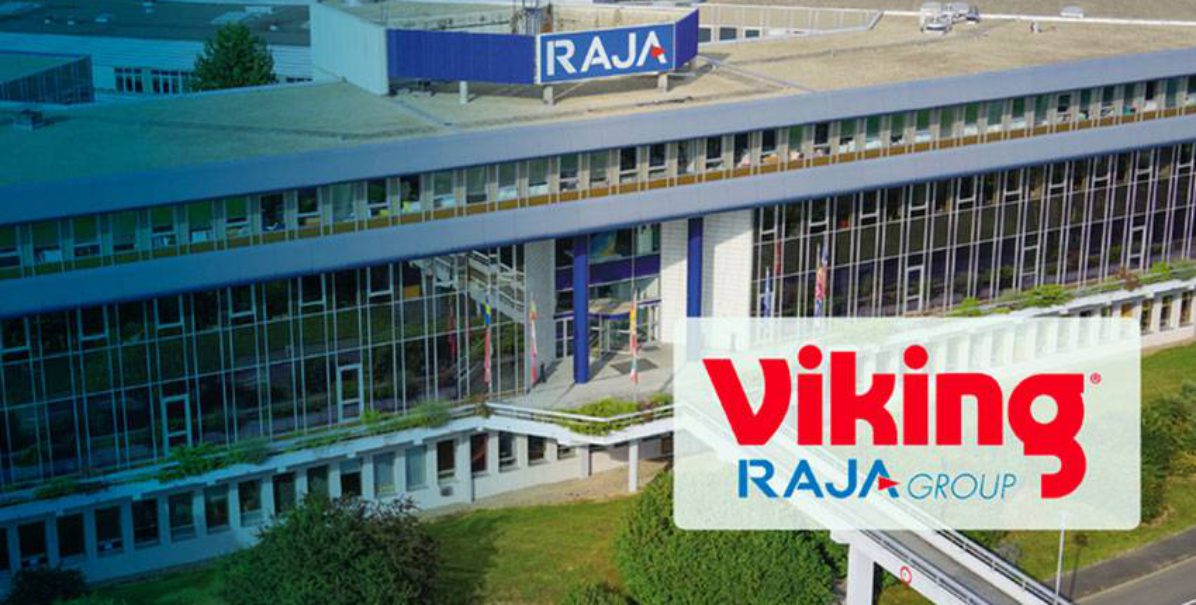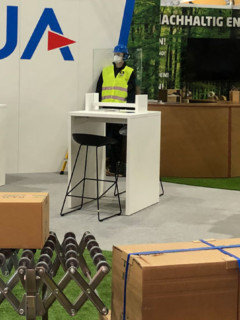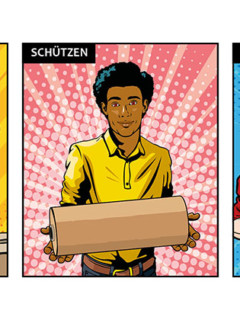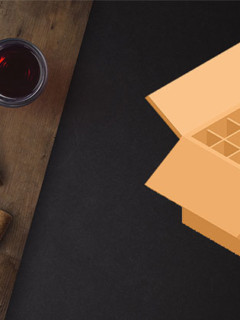From the moment the product is shipped, we have no control over it. We hand it over well packed, protected and padded into the hands of the shipping service provider. This makes it all the more important that we give it the best protection it can have on the way:
Solid cushion protection.
Cushioning protection for shipping
It basically applies to all areas of life: what is valuable to us, we want to protect. As long as we have influence, we try to foresee dangers, keep them away or mitigate them. But at some point there comes a moment when our influence ends. All we can do is “send our treasures” “into life” with the best conditions and hope that they will be spared the very hard knocks and falls.
Yes, it feels a bit like watching your child move out: The product, possibly developed for years, improved, optimised: Finished. And then out to the customer. But how?
Read here: Why the best protection is a box that fits well in size is!
Regardless of the choice of outer packaging (the most common: shipping bag, cardboard box), good cushioning protection in the packaging is indispensable. Strictly speaking, there is an interplay: single wall corrugated board on the outside, more elaborate padding on the inside. Triple wall corrugated board on the outside, narrower padding on the inside. Choose the outer packaging depending on the weight, size and sensitivity of the product to be shipped. For heavy products, be sure to use multiwall corrugated board!
-
Fixing
The following always applies: The product must be firmly fixed in the outer packaging. Because we have to deal with two “opponents” during shipping: Slipping back and forth and impacts from the outside. Fixing minimises the harmful effects of movement in the package. -
Padding
Five centimetres of padding on the top, bottom, left and right are ideal. No more, no less 🙂 This absorbs external influences and protects the contents against knocks and falls. -
Closing
The best box and the most effective padding protection is only effective if the box stays closed! The DHL graphic shows which parcel should be sealed in which way.
Five centimetres of all-round protection
Shipping professionals such as DHL recommend 5 centimetres of padding all around the product. Make sure that the cushioning protection “sits compactly”: Sometimes immense forces act on the parcel, and constant dripping wears away the stone: Even gentle vibrations that act on the parcel over a longer period of time during transport on the road, for example, cause the goods to be protected to “wander” in the parcel. By wrapping the product in several layers, you reduce the risk of the product “getting loose” and losing the protective distance to the outer packaging.
Do not leave out the lid area either! There is no top and bottom when shipping!
Padding, sure. But with what?
Reliable protection of goods during transport is the be-all and end-all! In addition to high-quality outer packaging, this of course includes the right padding material to protect the contents from shocks, vibrations or other negative effects of transport. But which is the most suitable padding and filling material?
All common padding materials have their raison d’être. Which materials you use depends entirely on your individual factors: How big and how heavy are your shipping goods? Do you want to ship in a particularly environmentally friendly way? How sensitive are your products, e.g. should scratches be avoided or do you have to pay special attention to electronic components?
The general rule is: Always choose a stronger, harder cushioning material for heavy goods; a cushioning material that is too soft may not be able to withstand the weight and the desired buffer zone will literally “fizzle out”! For light products, the padding can be correspondingly softer.
Packaging with air cushioning, foam film or packaging chips
If you want to ship fragile items or sensitive goods, this form of packaging protection is the ideal approach. This is because these materials are light, have a low own weight and are also very flexible, which means they adapt perfectly to the respective product.
A product completely wrapped in bubble wrap is thus protected against impact and shocks from all sides. The same applies here: the heavier the product, the larger the bubbles in the film should be! Small studded bubble film wraps delicate, light objects better, whereas large studded film is ideal for angular, massive products. Especially for electrical parts, there are bubble films that even protect against electrostatic charge during shipping.
The alternative to bubble wrap is corrugated board. This can be used for surface, edge or corner protection.
Packaging materials made of foam film offer particularly gentle cushioning protection. Like bubble wrap, foam packaging is light, shock-absorbent and easy to handle. Their special advantage: foam foils are also particularly gentle on surfaces and prevent scratches and marks. This means that fragile items such as glasses and vases, but also goods with sensitive surfaces such as touchscreens or medical devices can be safely wrapped.
Packaging chips also have cushioning properties: As cavity filling in the package, they ensure that nothing slips. Whether the goods to be shipped are square or round, the filling chips adapt to the respective conditions and unfold their shock-absorbing effect. Since they are also very dimensionally stable and durable, they can be reused – simply ingenious – for the next shipment.
Do’s and Dont’s in shipping packaging for the consumer
With increasing environmental awareness, consumers are also becoming more sensitive to packaging. Very few people want to do without purchases on the web (and thus without shipping the goods). Also clear:
If the goods arrive broken because the packaging and cushioning were not efficient enough, it is
a) no one is satisfied and
b) the environment is not helped.
By handling the return and re-delivery of goods, double packaging and double transport is involved.
And yet consumers are now looking closely at the shipping packaging and possible packaging sins. And they unfortunately all too often find it! The classic:
Cardboard boxes that are far too big and loads of filler and padding material!
Wrapping paper, shrink-wrapping paper, corrugated board
In the example above, it went wrong. But at least the sender was right in his choice of materials. Because:
Paper as a cushioning material is very popular with end customers. It is considered environmentally friendly and uncomplicated to dispose of. But what is paper “capable of” in terms of cushioning protection? Which types of paper are suitable for upholstery?
From classic wrapping paper, corrugated roll paper and crumple paper to delicate packing silk, this material offers everything you need for void fill and surface protection!
Packing paper
This is a flat material – usually kraft paper – which consists mainly of vegetable fibres. The term wrapping paper describes types of paper, usually made from waste paper, half pulp (half fresh fibres, half waste paper) or cellulose (fresh fibres), which are used for repackaging or for filling slipcases and other cardboard boxes. The protective paper is robust and resistant. There are numerous grades of wrapping paper that meet a wide variety of requirements, for example, tear resistance, abrasion resistance or vapour tightness. The production of a wrapping paper takes place via a standard paper machine, whereby corresponding properties (such as a coating) can be applied. Packing papers are available in different thicknesses, which are specified as grammage per square metre (g/m²).
A distinction is made between these three types of wrapping paper:
- AP packing papers: Made from more than 50% regenerated paper pulp fibres (waste paper ), the rest from paper pulp.
- ZP papers: Made predominantly from virgin fibre sulphite pulps with only minor additions of recovered paper.
- Kraft pulp papers: Contain at least 50% virgin fibre sulphate pulp and less than 50% waste kraft paper.
Schrenzpapier
Schrenzpapier is paper that is made from 100% (unsorted) waste paper. Softer than wrapping paper and less tear-resistant, but extremely popular as a filling and stuffing material: It is precisely because of its somewhat softer nature that Schrenzpapier is well suited to filling cavities; it adapts its shape effortlessly. However, bear in mind that heavy products will squeeze crumpled Schrenz paper quite quickly, and it may not be able to withstand sharp edges or corners for too long.
For comparatively light and insensitive products, crumpled paper is the consumer’s favourite: psychology alone! Tangible and visible paper fibres, colour, smell and feel literally scream: “Sustainability!” This variant of cushioning material can be quickly produced by hand from sheets of paper for smaller needs. For packaging on a larger scale, professional paper cushioning systems are the obvious choice. They produce environmentally friendly paper cushions in the same way by “crumpling”.
Corrugated cardboard
In addition to its use as a filler and cushioning material, however, Schrenzpapier is also frequently used in the manufacture of corrugated board, especially for the production of the top and intermediate layers. Classic corrugated board provides natural air cushion protection. Due to its corrugated nature, it acts like a shock absorber! Due to the cross-grooves, it can either be flexibly wrapped around the product to be protected or folded up and used as padding.
Single wall corrugated board with a small type of flute, for example a B-flute as with RAJA qualitycorrugated board, is suitable for cushioning and wrapping as well as for edge and corner protection.
Decorative upholstery and protection
Tissue papers are particularly high-quality and pretty. Supple packaging silk is equally suitable for wrapping, padding and decorating! Bright colours give it a cheerful look, so that it can be packaging material but also wrapping paper at the same time. Paper wool is just as colourful and yet fulfils its purpose. This decorative paper filling material fills even small spaces. Due to its variety of colours, it is ideally suited for packaging presents such as gift baskets, as it is not immediately recognisable as "normal" padding material at first glance.

















